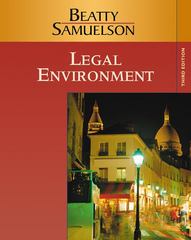please help. and this is all the information i have on this question, so please stop saying missing information or missing graphs or Incomplete question. I'm stuck on question 1-4.
Answer ALL Questions. There are 2|) marks In total- Each question Is vrorth 1 mark. li'ou must enter your answer onto the corresponding question in moo-die [Questions 1-4 relate to the following model} Consider XVZ Bank that is established with mambo of deposits and $1t'ltltlbn oi equity. Its assets are some investments that are expected to pay oft 521'5ilbn. in 1 years time. Suppose the rate of interest on sate assets is 10% a year and there is no risk premium to hold risky assets like XYZ Bank's imestments. 1. Suppose very shortly after being established the bank finds that it has been too optimistic and now expects its investments to pay off $24i'5bn in 1 year time. What is the return to equity in the bank 1? A. -25% B. 60% G. -5T.5% D. 400% E. None of A-D . Suppose instead that the bank's liabilities were initially Etititibn of deposits with the rest being equity. Now what is the return to equity if the expected pay oft oi its investments falls to $2415bn in 1 year time ? A. -25% B. 60% C. 615% D. -1 00% E. None of A-D . Now suppose in the scenario of question 2. that very shortly after being established the bankfinds that it has been too optimistic and now expects its investments to pay oft $24?5bn in 1 year time and that the market now requires a premium of 10% a year to hold risky assets like KY2 Banks's investments. Now what is the return to equity ? A. -25% B. 60% G. -B?.5% El. -1 oust. E. None of A-IJ Page 1 of- HEXT PAGE 4. Now suppose in the case of question 3 that the bank's investment falls further, so that very shortly after being established the bank finds that it now expects its investments to pay off $2200bn in 1 year time and that the market now requires a premium of 10% a year to hold risky assets like XYZ Bank's investments. Suppose now that the owners of the bank have an investment opportunity that will cost $500n today and was certain to pay off value $1000bn in one year's time. Would the risk neutral owners of the bank choose to put this investment through the bank or would they prefer to invest in the project themselves using their own private funds? A. Not undertake the investment B. Undertake investment through the bank C. Undertake investment using private funds D. None of A-C (Questions 5-10 relate to the following model) Consider the following Diamond and Dybvig style model with 3 periods, t=0,1,2 where there are 100 agents who each have $1 endowment of a good at t=0 but care about consuming at t=1 or t=2. The endowment can be invested in two assets; a storage asset that allows the costless transfer of one unit from one time period to another and an illiquid asset that pays out 4 in period 2 but only 1 if it is liquidated early in period 1. At t=1 50 people learn, that they only care about consumption at t=1, while 50 learn that they only care about con- sumption at t=2, and so the ex ante utility of an agent in t=0 is ?"(C1) + zu(C2) where the utility function u is u(C) = 1 - z. 5. What is the ratio of C2 to C, in the optimal bank contract if it is known with certainty that there won't be a bank run? A. & = 1 B. =2 C. = = 4 D. & = 16 E. None of A-D Page 2 of 6 NEXT PAGE








